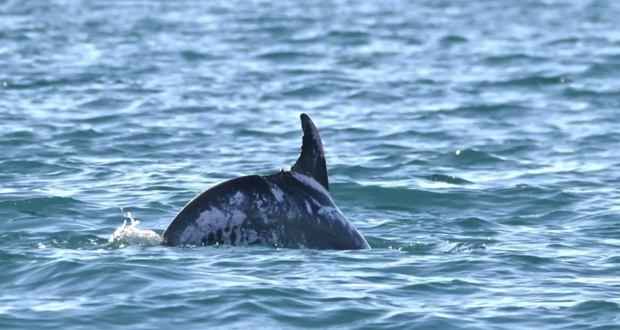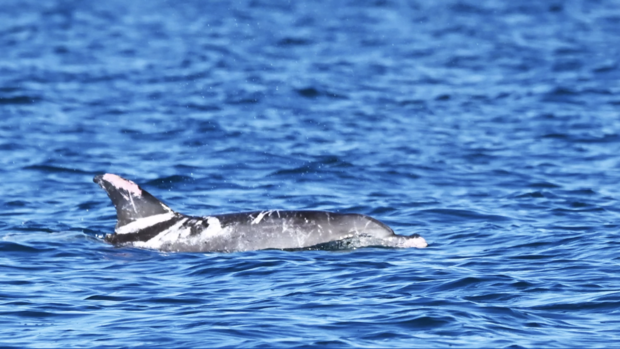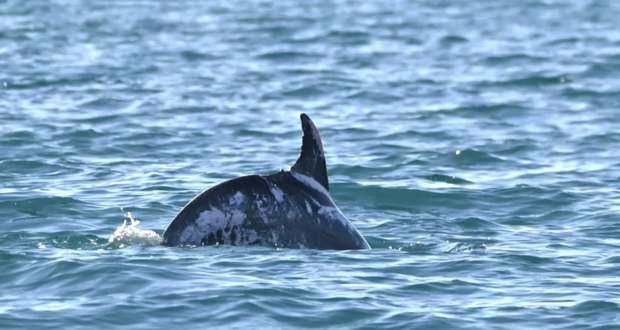There’s a bottlenose dolphin swimming through Australia’s waters that’s anything but typical. Researchers say the marine mammal is covered in a rare coloration that only a handful of other dolphins that have been photographed have and that earned it a unique name: Speckles.
While surveying Southern Queensland’s Hervey Bay in September 2022, researchers with Australia’s University of the Sunshine Coast said they spotted a pod of half a dozen dolphins. That’s when one dolphin leapt out of the water – and left the researchers stunned.
“Speckles leapt out of the water three times in an upright, vertical position, while the rest of the group traveled in a ‘porpoising’ movement,” researcher and lead author of the study documenting the dolphins, Georgina Hume, said in a news release from the university. “This allowed us to get a very clear look at its underside which had many white areas, along with white stripes across its dorsal and lateral sides.”

Georgina Hume/University of the Sunshine Coast
The “near-symmetrical white patches” hadn’t previously been seen in their years-long research of the species. And because the dolphin appeared to be healthy overall – aside from a healed shark bite on its side – researchers said that eliminated the possibility the discoloration could have been caused by disease or sunburn.
So what caused it? An “extremely rare skin condition” called piebaldism, the university said. It’s so rare that Speckles is one of only 24 reported cases in dolphins and one of only six photographed cases of dolphins having the condition in the world. This is the first documented case among the species in Australia, and the second documented in the southern hemisphere.
Behavioral ecologist Alexis Levengood said in the university’s news release that the condition is similar to albinism, a genetic mutation that results in the absence of melanin, and leucism, the partial loss of pigmentation that, unlike albinism, doesn’t affect the eyes.

Georgina Hume/University of the Sunshine Coast
“Piebaldism is a partial-loss of pigmentation so the individuals show this patchy coloration,” Levengood said in the release. She also told the Australian Broadcasting Corporation that “the best part of science happening in real life is where you get to see something for the first time and really experience it.”
“I’ve worked in this field for about 15 years across three different continents,” Levengood told ABC, “and I’ve never seen it myself firsthand, so once we brought back the photos it was a pretty exciting afternoon for us.”
The discovery was published in the scientific journal Aquatic Mammals.
Researchers don’t yet know the dolphin’s sex, but they hope to get more images, as well as conduct genetic sampling, to learn more about the condition.
While Speckles is one of only a few dolphins known to have the condition, there are more documented cases among other species.
- In:
- Australia
- Dolphin
Li Cohen 
Li Cohen is a social media producer and trending content writer for CBS News.
